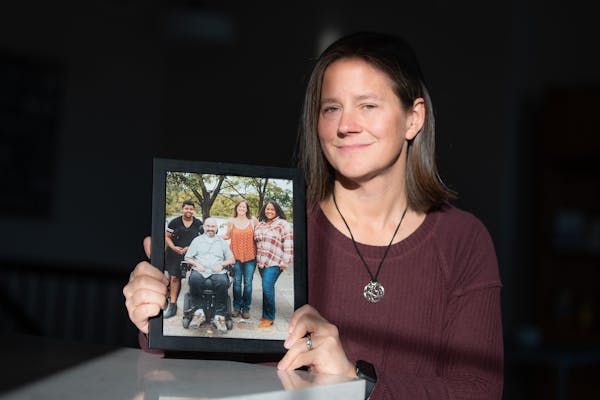If only figuring out what to do with your body after you die was as simple as TV made it seem.
"I'm not going to be buried in a grave," said character Frank Reynolds from "It's Always Sunny in Philadelphia." "When I'm dead, just throw me in the trash."
Unfortunately, Frank, that would almost surely incur legal action, likely a misdemeanor or felony charge for improperly disposing of human remains. But with the national median cost of a funeral with burial rising to $8,300 this year, according to the National Funeral Directors Association (NFDA), it's no wonder morbid jokes like that hit home.
But at least Frank made his wishes known. Just 10% of people have told a funeral home in writing what their funeral plans are, according to NFDA surveys, and an even smaller share have pre-paid for their arrangements.
So whether you are pre-planning your own funeral — as experts highly recommend by either talking with a funeral home or including it within your estate planning — or helping with a loved one's arrangements, here are a few basics to start the conversation:
Crypt-ocurrency
Even the cost of a service with cremation now averages $5,800, and that doesn't include cemetery fees or a grave marker, which can add thousands more. Alternative options only available in certain states — like human composting — can tack on even more in transportation costs.
While it might sound callous to try to get the best deal for a funeral, that is increasingly driving many decisions in death care, especially for folks who didn't plan ahead.
"As costs go up, a lot of people just can't afford a traditional funeral," said Jimmy Olson, owner of Olson Funeral Home & Cremation Service in Sheboygan, Wis. "Clients also are more value-driven than tradition-driven. They want to get their money's worth for whatever they're choosing."
The law requires funeral homes to post prices for their services, which makes shopping around easier. But keep in mind, the combination of options is far more than just the color of the urn or coffin and the type of service.
Talking bodies
The most common options for what to do with a dead body are embalming and burying it in a coffin or cremating it and burying, spreading or holding on to the ashes. More than 60% of Americans now choose cremation, and that number should reach 85% by 2045.
That's a major change in our culture of death care, in part due to loosening religious affiliations and restrictions.
Alternatives to burial and cremation, especially eco-friendly options, are becoming more popular.
The first forest cemetery in Minnesota, the St. Croix Valley Memorial Forest in Scandia, offers ash-spreading at the base of a mature tree, with a small plaque then marking it. One red maple listed for an all-inclusive price of $14,900 this month.
In Minnesota, there is a controversial two-year moratorium on green burials at new cemeteries pending an environmental review. The practice is the way humans have buried each other for millennia: no chemical embalming, only encasing the body in a linen shroud or wood coffin instead of a metal casket for faster decomposition and burying the body shallower.
This remains the standard for many Muslim and Jewish burials, and the moratorium doesn't impact existing cemeteries.
The state does allow alkaline hydrolysis — dissolving a body — for cremation, which uses less energy and releases fewer emissions than traditional fire cremation. That's part of the appeal of human composting, which places bodies in "pods" to quickly and naturally decompose into soil. That practice is available in a handful of states, and Minnesota is studying the practice as part of its green burial review, which should come out in early 2025.
For the ancient tradition of an open-air pyre — a body ceremoniously burned outdoors on a pile of wood — there is just one public option in the United States in Colorado. But it's only available to residents of the area.
For donating your body to research after death, you should make those wishes clear with a signed anatomical bequest form before you die. Mayo Clinic does not allow next of kin or those with power of attorney to make that choice, though the University of Minnesota "considers all donations made by next-of-kin or authorizing persons on an individual basis," per the medical school's website.
For donating tissue, organs and eyes to those who are still living, visit donatelifemidwest.org or americandonorservices.org to make sure you're enrolled and communicate your wishes to your family.
There are countless other ways to memorialize remains.
"As long as it's legal and ethical, we've done all of it," Olson said of the funeral industry. "There are companies that will take your cremated remains and place them in gun casings. You can be made into a diamond or shot into space or be mixed with acrylic paints and have an oil painting done with your remains. You can be turned into a vinyl record."
A grave affair
If the deceased left plans for their funeral service, just follow those wishes. If not, survivors will have to decide what kind of gathering to have, if any, to honor the dead and console the living.
Olson said one of the biggest discussions around planning funerals for loved ones begins with "what they would want."
But: "We always say the funeral is not for the dead, it's for the living," he said. "I hear, 'We think Mom would like this,' but what do you want? What do you need? Right now, Mom's in a better place."
Religious ceremonies remain the standard for many funerals. NFDA surveys show religion is at least "somewhat important" for 71% of Americans and "very important" for 41%, though that number has fallen in recent years. More families are opting for a celebration of life or activities, like a day on the links to honor die-hard golfer Dad.
Options include a "full service" funeral that takes place at a church or funeral home, a visitation that can feature an open or closed casket, a graveside service, a wake, a celebration of life or other event. Costs vary, but typically: the simpler, the cheaper.
Overall, the trend is toward greater personalization to best reflect the life lost and help those who remain in their grieving process.
"There is no right or wrong," Olson said. "Just think of how you'd like to be remembered."
Life (not death) insurance
Many funeral homes can accept partial pre-payments or monthly payments toward funeral costs. Families can also start to "pay down" expected expenses when a loved one nears the end of their life.
Olson said paying in full in advance, even through several years, can lock in prices. Since 2021, the average cost of a funeral has increased between 6% and 8% depending on burial, cremation and other factors, according to the NFDA.
But don't bank on life insurance.
"Life insurance can take six to eight weeks to pay out, and the person receiving payment might not be the one making funeral arrangements," Olson said. "We simply tell families: We don't take life insurance as payment."
Another problem with the delay is the requirement to pre-pay for a grave site. At the cemetery, workers "won't dig a hole until the grave site is paid for," he said.
Burial insurance can run $50 to $100 a month and cover tens of thousands of dollars of funeral expenses, according to Choice Mutual and Progressive. Some of those policies can pay out directly to a funeral home, called a "pre-need" policy.
Olson stressed not everyone can incorporate financial planning into their funeral arrangements, but that shouldn't be a deterrent to planning.
"Everyone needs to plan. Number one: You need to have a conversation with your family," he said. "Then we encourage you to shop around, get a feel for different buildings and staffs."
And it's better to start now, before it's too late.

UnitedHealth shareholders give tepid support to $60M in stock-based pay for new CEO
Target recalls more employee groups to downtown Minneapolis headquarters

Ronzoni pasta-maker coming to Lakeville in $880 million Post acquisition

$200M acquisition by Minneapolis company will help it aid other firms make deals

